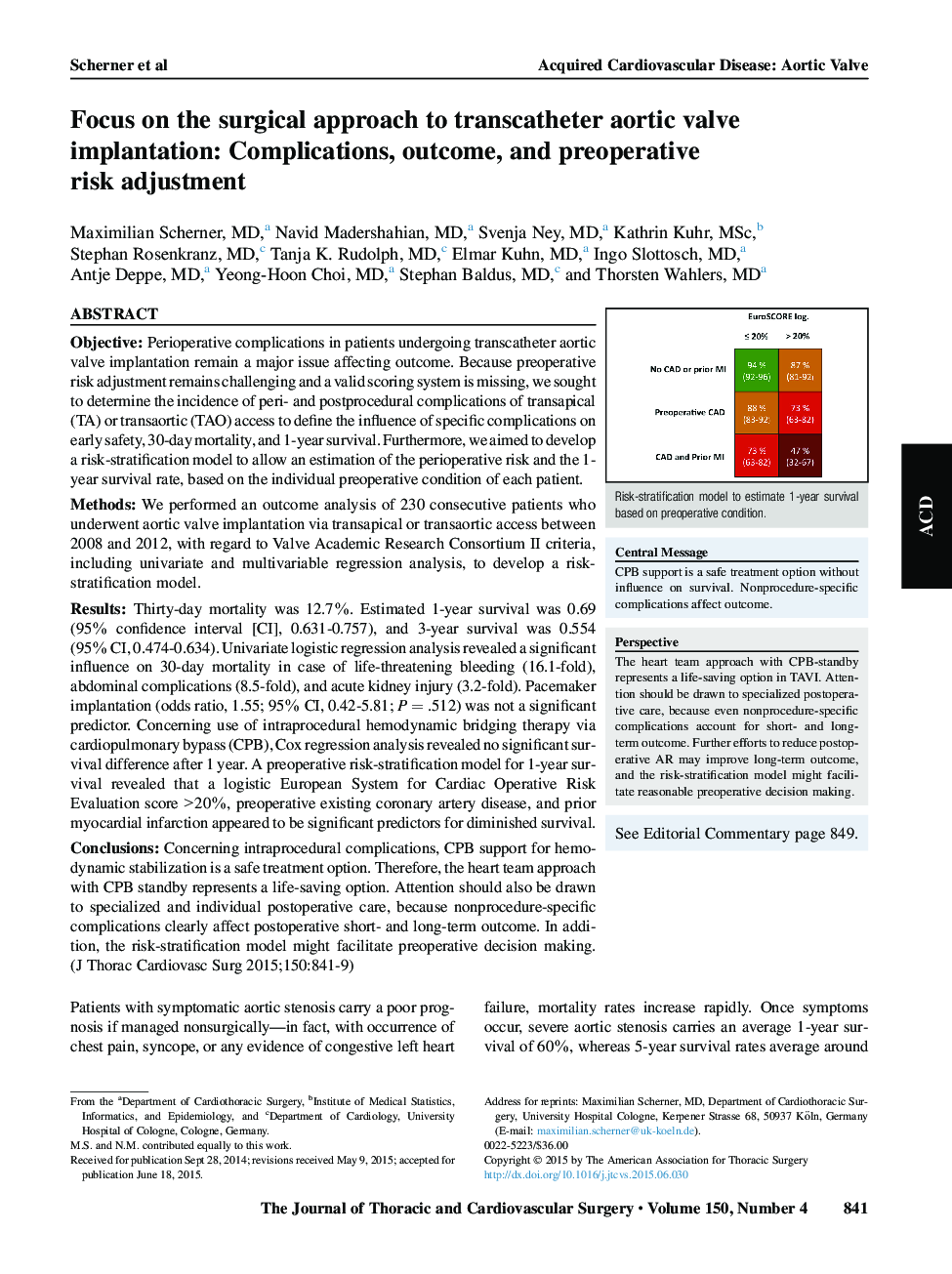| کد مقاله | کد نشریه | سال انتشار | مقاله انگلیسی | نسخه تمام متن |
|---|---|---|---|---|
| 2979054 | 1578593 | 2015 | 9 صفحه PDF | دانلود رایگان |

ObjectivePerioperative complications in patients undergoing transcatheter aortic valve implantation remain a major issue affecting outcome. Because preoperative risk adjustment remains challenging and a valid scoring system is missing, we sought to determine the incidence of peri- and postprocedural complications of transapical (TA) or transaortic (TAO) access to define the influence of specific complications on early safety, 30-day mortality, and 1-year survival. Furthermore, we aimed to develop a risk-stratification model to allow an estimation of the perioperative risk and the 1-year survival rate, based on the individual preoperative condition of each patient.MethodsWe performed an outcome analysis of 230 consecutive patients who underwent aortic valve implantation via transapical or transaortic access between 2008 and 2012, with regard to Valve Academic Research Consortium II criteria, including univariate and multivariable regression analysis, to develop a risk-stratification model.ResultsThirty-day mortality was 12.7%. Estimated 1-year survival was 0.69 (95% confidence interval [CI], 0.631-0.757), and 3-year survival was 0.554 (95% CI, 0.474-0.634). Univariate logistic regression analysis revealed a significant influence on 30-day mortality in case of life-threatening bleeding (16.1-fold), abdominal complications (8.5-fold), and acute kidney injury (3.2-fold). Pacemaker implantation (odds ratio, 1.55; 95% CI, 0.42-5.81; P = .512) was not a significant predictor. Concerning use of intraprocedural hemodynamic bridging therapy via cardiopulmonary bypass (CPB), Cox regression analysis revealed no significant survival difference after 1 year. A preoperative risk-stratification model for 1-year survival revealed that a logistic European System for Cardiac Operative Risk Evaluation score >20%, preoperative existing coronary artery disease, and prior myocardial infarction appeared to be significant predictors for diminished survival.ConclusionsConcerning intraprocedural complications, CPB support for hemodynamic stabilization is a safe treatment option. Therefore, the heart team approach with CPB standby represents a life-saving option. Attention should also be drawn to specialized and individual postoperative care, because nonprocedure-specific complications clearly affect postoperative short- and long-term outcome. In addition, the risk-stratification model might facilitate preoperative decision making.
Journal: The Journal of Thoracic and Cardiovascular Surgery - Volume 150, Issue 4, October 2015, Pages 841–849